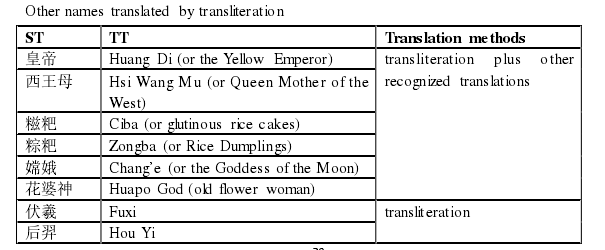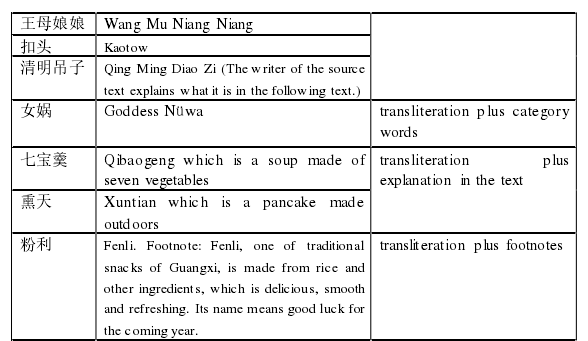本文是一篇英语毕业论文,本文以《地下世界:一次深刻的时间旅行》的汉译为例,从切斯特曼翻译规范理论的角度阐述了纪实文学的翻译。通过分析,可以看出用切斯特曼的翻译规范理论来分析纪实文学作品的翻译是可行的。
Chapter One Project Description
1.1 Introduction of the Source Text
Underland: A Deep Time Journey is about what MacFarlane experienced in theunderground world. This book consists of three parts: the Great Britain, the CentralEurope and the Northern Europe. In the first part, the author went to Mendips ofSomerset, Boulby of Yorkshire and Epping Forest of London. In the second part, theauthor arrived at Paris, the Carso of Italy and Slovenian Highlands. In the third part,the author went to some places in Northern Europe, including Lofotens and Andøyaof Norway, Kulusuk of Greenland, Knud Rasmussen Glacier of Greenland andOlkiluoto of Finland. On the one hand, human beings are eager to explore theunderground world. On the other hand, human beings are afraid of the underworldbecause of its uncertainty. Burying the dead, mining and underground experimentsare all human activities in the underworld. Stories about the underworld also appearfrequently in mythology and literature works, such as Katabasis, the journey ofAeneas to meet his dead father in hell, the action for the rescue of Eurydice fromHades by Orpheus and Enki’s travel to the underworld in Epic of Gilgamesh.Underland: A Deep Time Journey takes readers on an incredible journey wherebarrows, dark matters, underground mines and sinkholes will change the horizontalway they see the world. Following the footsteps of Macfarlane, this book will leadreaders to view the world in a vertical way.
Underland: A Deep Time Journey owns the distinctive features of documentaryliterature. In terms of the translation task, the translator should be faithful to thesource text and convey information of the source text to the target readers to thegreatest extent. Besides, the translator should try her best to keep the literariness ofthe source text in the translation, which is determined by the characteristics ofdocumentary literature. Therefore, the requirement of documentary literature oninformation transmission and literariness makes the translation task difficult.
1.2 Translation Process
The translation material of this report is excerpted from Underland: A DeepTime Journey by Robert MacFarlane. The translator paid attention to the part one andthe part three of the source text and acquired a lot of new knowledge from it. In termsof the translation process, it is also a process of appreciation and enjoyment. Thetranslator started translating in January 2020 and finished the task in four months.The whole translation process includes pre-translation, in-translation andpost-translation.
1.2.1 Pre-translation
Reading the whole source text is the first step of the translation process. In this way, the translator got the main idea as well as the inner relationship of every sectionof the source text. By reading the whole source text, the translator became familiarwith the style of the source language. In order to make preparation for translating,some complex sentences and core parts were marked, and relevant backgroundinformation was found out.
Considering that the source text is a documentary literature work about travel,the translator read some books concerning similar theme to make her acquaintancewith the source text. In addition, some relevant films also helped the translator instudying the source text. In this way, translation can be improved through thecomparison to these parallel texts.
Although translation is a practical activity, the whole process can not beseparated from the guidance of a certain theory. Based on the analysis of thecharacteristics of the source text, the translator found that Chesterman’s translationnorm theory is consistent with the source text. Therefore, before translating, thetranslator carefully read Chesterman’s translation norm theory to prepare fortranslation practice.
Chapter Two Theoretical Framework
2.1 Relevant Researches on Translation Norms
In this section, theories on translation norms will be elaborated. Scholarsrepresented by Toury, Hermans and Sch ffner have made certain achievements in thefield of translation norms. What’s more, some Chinese scholars have supplementedthe theory of translation norms.
It is Gideon Toury, who introduced the study of translation norms into the fieldof translation. In his early years, Toury paid considerable attention to the research onliterary translation. Therefore, focusing on the influence of target culture ontranslation behavior and translation products, he makes a systematic study of normsin literary translation from the perspective of translation studies. As the firsttranslation theorist who introduced the concept of norms into translation studies,Toury proposed methods to identify and classify translation norms. Toury considersthat translation norms should be divided into three categories. Among them,preliminary norms serve as translation policy in the target culture, that is, the choiceof the text to be translated and the translatability of the text, which involves social,cultural, economic or political issues; operational norms affect the actual choice intranslation activities, and thus determine the final form of translation products; initialnorms require the translator make decision between two extreme choices. (2012, p.79)That is to say, the translator either chooses to keep in line with the source text or to conform to the linguistic norms of the target language or literary system. The formermakes the translation as adequate as possible, while the latter makes the translationacceptable.
2.2 Chesterman’s Translation Norms
Before introducing the origin of Chesterman’s norms, one person is necessary tobe mentioned: Richard Dawkins, a British evolutionary theorist. In the year of 1976,The Selfish Gene was published and the author is Richard Dawkins. With its uniqueform and connotation, the word “meme” in the book has been widely concerned bysociety. He wants to find out a term, which is similar to “gene” in biology, aiming toshow the evolution in different cultural realms. According to Dawkins, “a meme is aunit of cultural transmission, or a unit of imitation. As genes propagate themselves inthe gene pool by leaping from body to body via sperm or eggs, so memes propagatethemselves in the meme pool by leaping from brain to brain via a process which, inthe broad sense, can be called imitation.” (1976, p.206)
Chesterman introduced Dawkins’s concept of meme into translation studies,“But for meme to be transmitted verbally across language boundaries, if both senderand receiver lack the relevant multilingual competence, there needs to be atranslation.” (Chesterman, 2016, p.3) He believes that meme in translation refers totranslation theories and ideas, all of which constitute a meme pool. In his opinion, “Ifa meme comes to dominate (for some reason: practical, political, cultural, aesthetic...),and competing memes fade, one course of development is that such a meme becomesregarded as a norm-whether imposed by an authority or simply accepted as such.”(Chesterman, 2016, p.49) In other words, in meme pool, some translation memesdisappear when they fail to win universal acceptance, some once very popular butfinally give way to other translation memes, and some have strong vitality and seemto be irresistible. Different factors of translation memes dominate in different periods.Once a meme occupies the dominant position in the meme pool and is widelyaccepted by the community, then it becomes a translation norm. (Chesterman, 2016,p.49)

Chapter Three Chesterman’s Translation Strategies Applied in theTranslation..............................22
3.1 Syntactic Level........................................22
3.1.1 Shift of Unit.........................................22
3.1.2 Adding Conjunctions.........................................24
Conclusion...............................41
Major Findings........................................... 41
Limitations........................................42
Chapter Three Chesterman’s Translation StrategiesApplied in the Translation
3.1 Syntactic Level
Syntactic level refers to the structure of the sentence. In short, a sentencecontains nouns, verbs, adjectives, adverbs and so on. Words with different parts ofspeech should be placed in a certain order in a sentence. In addition, according totheir different functions within the sentence, words are divided into subject, predicate,object, attribute, adverbial and so on. The following translation strategies helptranslators meet the expectation of Chinese readers and make target sentencessyntactically correct.
3.1.1 Shift of Unit
Chesterman suggested that units are: morpheme, word, phrase, clause, sentenceand paragraph. A unit shift occurs when an ST unit is translated as a different unit inthe TT. (2016, p. 93)
Example 1ST: Late-summer heatwave, heavy air.TT: 时值夏末,热浪滚滚,暑气沉沉。
Analysis: The original sentence is concise. Considering the literariness of theoriginal text, the translator has to recreate the vivid scenes in the target text. In theprocess of translation, the syntactic strategy Sy4 (unit shift) is used to shift theoriginal sentence into three units. It is true that four-letter words appear frequently inChinese. Therefore, the strategy of unit shift is applied to make the translation keepthe consistency of the Chinese ways of expression. In this way, a translation thatconforms to the habits of Chinese readers came into being. By unit shifting, thetranslator reorganizes the original five words to get a more authentic translation,which conforms to the expectancy norms and communication norms.

Conclusion
Major FindingsTaking the Chinese translation of Underland: A Deep Time Journey as anexample, this report expounds on the translation of documentary literature from theperspective of Chesterman’s translation norm theory. Through the analysis, it can beseen that it is practicable to use Chesterman’s translation norm theory to analyze thetranslation of documentary literature work. The major findings are illustrated asfollows:
(1) Chesterman’s theory of translation norms is feasible in guiding thetranslation of documentary literature. On the macro level, translation norms affecttranslators’ decision-making process. On the micro level, translation strategiesprovide solutions for translators to address translation problems. Rather than being aconstraint, translation norms help translators make better choices in the process oftranslation. As the saying goes, nothing can be accomplished without rules. With thehelp of Chesterman’s translation norms, translators can solve translation problems.
(2) From the beginning of translating the source text to the completion of thisreport, the translator realizes the following functions of Chesterman’s translationnorms: the expectancy norm helps translators improve the readability andacceptability of the translation; the accountability norm requires translators to take oncorresponding responsibilities in translation practice; the communication norm putsforward requirement for the translator in cross-culture communication; the relationnorm reflects the inner relationship between the source language and the targetlanguage. Indeed, under the guidance of Chesterman’s translation norms, thetranslator’s decision-making process becomes clearer and she knows what she wantsto achieve.
reference(omitted)
